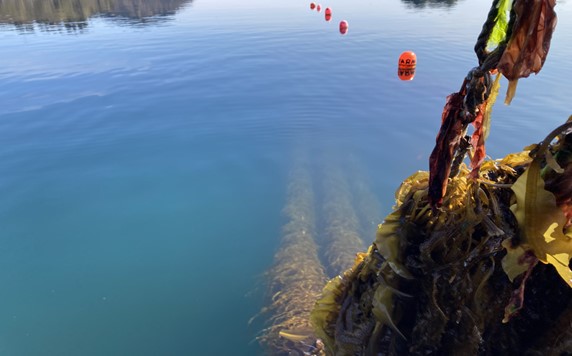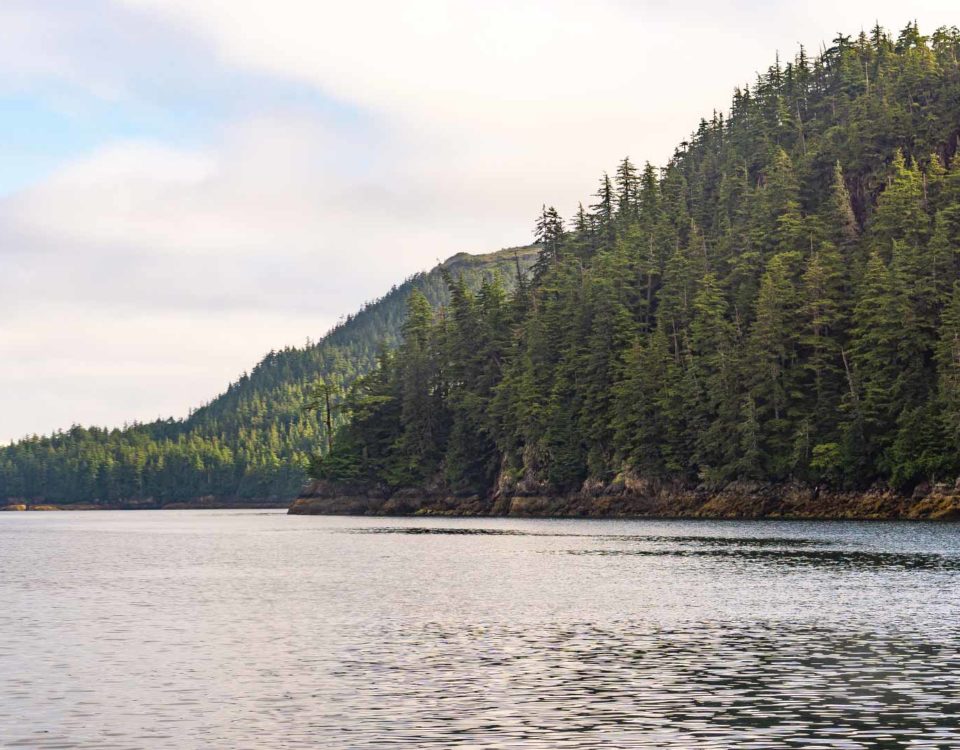Kelp Farming Method Development

PROJECT
Kelp Farming Method Development
Mariculture Research and Restoration Consortium: Kelp Farming Method Development
Background
Alaska’s seaweed industry is poised for a significant leap forward. Since the first commercial harvest of farmed kelp on Kodiak Island in 2017, interest continues to gain momentum across the region's diverse coastal environment. Farming guidelines developed elsewhere have provided an essential starting point but do not necessarily align with these regional complexities. Efforts in optimizing kelp farming in Alaska requires a deep dive into understanding the relationships between the environment, infrastructure, and the potential cultivated biomass so that farmers and the industry, at large, are better equipped to tailor broad practices to local conditions.
The goal is clear: to develop kelp farming methods that are practical, sustainable, and suited to Alaska's conditions, thereby improving yields. This requires a shift from generalized practices to ones that are directed and nimble. For instance, insights from global kelp farming efforts suggest opportunities in controlling for the spacing of grow lines, harvesting early growth via trimming of kelp blades, and careful consideration of the source of parental stock in seed production. In our work, we delve into the feasibility of these opportunities while investigating how farming practices interact with relevant environmental factors to build towards optimized kelp production efforts. By refining kelp cultivation techniques, there’s a tremendous opportunity to support local economies by providing sustainable options for value-added industries.
Methods
Via a series of experimental investigations, we will build essential knowledge about how to best leverage local environmental conditions to inform decisions in farming practices to boost local efficiencies that meet regional goals.
In the first project, we investigate the role of the density of farmed biomass. Like terrestrial plants, kelps compete for light and nutrients. Therefore, the density of kelp within a given space may influence the size, shape, and total biomass growing in that space. We will assess this relationship by adjusting the spacing between grow lines within test farm arrays. Lines that are spaced further apart, in theory, may reduce self-shading effects and increase available nutrients to the biomass on each grow line. This will be tested using ribbon kelp (Alaria marginata) in a farm off Kodiak Island. We will record blade dimensions (length, width, and thickness) and final kelp biomass (per foot of line and per area). This work will inform how line spacing can be adjusted by kelp farmers to maximize harvested yields.
The second project will determine the feasibility and value in early season trimming of kelp fronds. As kelp rapidly grows, more resources and energy are typically allocated to the new tissues at the base of the blades as older tissues gradually mature beyond their physiological optimum, eventually eroding into the water column. It may be economically beneficial to harvest the tips of blades to capture this biomass before it erodes, perhaps allowing the kelp to divert even more resources to growth of new tissues. We will test this by trimming ribbon kelp (A. marginata) early in the growing season in a polyculture farm at Kachemak Bay, with the aim to investigate the impact on final kelp yield. We will pair these data with measurements of local seawater nutrients, light, current speed, and the carbon and nitrogen content of kelp biomass to understand whether this practice can boost production.
In the third project, we will explore whether the sourcing of parental stock from different regions influences the performance of farmed kelp under different temperature and salinity gradients. Environmental conditions can influence the distribution and genetic composition of wild seaweed populations, where their performance is often adapted to localized thresholds. Notably, a recent study exploring the resiliency of early life history stages of four kelp species in Alaska found differences in spore settlement and gametophyte development due to differences in temperature and salinity, potentially driven by parental stock. We will collect reproductive tissues for sugar kelp (S. latissima) from different geographical areas, isolate male and female gametophytes for each location, amplify these uniclonal gametophyte cultures, and then experimentally cross-fertilize clones to identify the upper and lower limits in temperature and salinity for each species of mixed origin. Once these limits are obtained, we will conduct factorial assessments to measure the interactive effect of temperature and salinity in the development of farmed kelp.
What We Are learning
We are in the beginning stages of this collective work, which is projected to continue into 2031. So far, we have completed field-based work to assess how the spacing of kelp grow lines influences biomass characteristics and yield. Preliminary analyses suggest that increased spacing corresponds to increased yield per foot of grow line, as well as increases in blade length, width, and thickness. It is important to note that assessment is still undergoing rigorous analysis. We intend to use these results to highlight expected patterns in line spacing in the context of sites that differ in seawater nutrients and water flow.
PRINCIPAL INVESTIGATORs
Dr. Schery Umanzor
University of Alaska Fairbanks
sumanzor@alaska.edu
Collaborators
Mariculture Research and Restoration Consortium
RESEARCH PERIOD
2022-2031
FUNDING
Exxon Valdez Oil Spill Trustee Council
- Experimental array holding ribbon kelp installed by Alaska Ocean Farms, Kodiak. The array was constructed to test the effect of line spacing on kelp growth. Photo credit: Schery Umanzor




